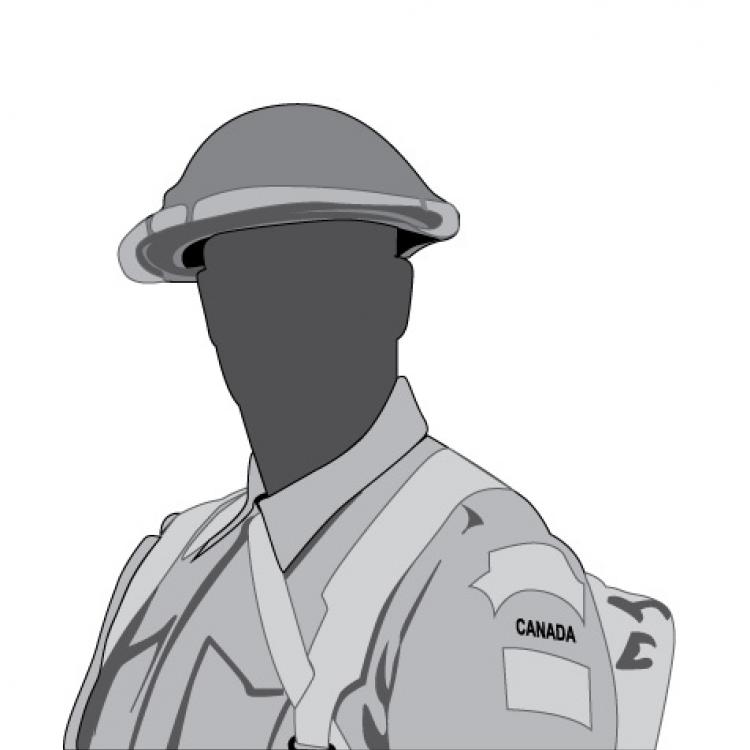STEVENS, George Louis
DIVISIONAL UNIT: 2nd Canadian Infantry Division
6th Infantry Brigade
31st Battalion - Alberta
Canadian Infantry Corps
SERVICE NO: 654768
RESIDENCE: Londesborough – Ontario
DATE OF BIRTH: July 1, 1898
Hullet Township – County of Huron - Ontario
DATE OF DEATH: August 9, 1918 20 years 1 month
CEMETERY: Rosieres Communal Cemetery Extension – Rosieres –
Somme – France
I A 16
PARENTS: Mr. George and Mary Stevens – Londesborough - Ontario
Occupation: Farmer Religion: Methodist
Enlistment: Blyth – May 16, 1916 – 161st Huron Battalion
Enlistment Age: 17 years 10 months
The 161st Battalion had departed Canada and arrived overseas at Liverpool on November 11, 1916.
During the attack of the previous day – August 8th – the Battalion had received a new recruit. The Transport Section had found a little Russian pony not even twelve hands high. He was a sociable and friendly animal and was adopted by the
31st Alberta Regiment as their mascot and he was named “Heine”. He remained with the Battalion and was demobilized in Calgary after the unit returned home to Canada.
Daylight came on the morning of August 9, 1918 and the 31st Battalion prepared itself for battle. Opposing snipers were shooting at one another and then the enemy artillery brought down a bombardment using heavy calibre guns on the front and rear areas and this began at 05:30 am and lasted until 10:00 am.
This morning was clear and fair and visibility was excellent. Before the 31st Battalion lay a gentle and green slope bathed in the morning sunlight but in a few hours this land would be stained red and the slope would be covered with the dead and the wounded of the Battalion.
At 11:00 hours the attack would begin with the 6th Infantry Brigade moving alone against the Rosieres-Verly Line. The first objective was the light railway line to the east of Rosieres and if possible the battalion would try to push on and capture the Chaulnes-Roye railway.
The Battalion front stretched from Cais-Rosieres road on the north to the light railway on the south and this covered 1,300 yards.
The artillery barrage came down onto the enemy positions but it was feeble and as they advanced a wave of bullets from the enemy machine guns and automatic rifles and the men began to fall dead or wounded. The hostile shell fire now became heavy as the enemy artillery began to find the range. The flanks were exposed because the infantry on both flanks were late in advancing. Tank support would not be available for an hour. The strategy now was to gain ground in short sectional rushes but the cost was heavy. From the right and left machine gun fire swept through the ranks and overhead of the men the white wreaths of shrapnel and the red flame of exploding shells on the ground and all this was causing heavy casualties but the men were gaining ground.
The 6th Infantry Brigade was taking most of the enemy fire and men fell still or wounded and crawling to the rear. On the high ground “B” Company had its flank in the air and suddenly about 100 enemy soldiers were seen moving to encircle the left flank and two platoons were sent back to hopefully take care of that situation and the enemy was beaten down.
No. 10 Platoon advanced forward from one shell hole to another but they were caught and mostly wiped out.
“C” Company in the centre was under heavy and extreme fire and could not move and a single section of this Company slithered forward so they could bring the church tower in the town under fire. They put three machine guns out or commission and along with “D” Company and one tank began to advance again.
Suddenly the forward movement of the 31st Battalion and that one tank had broken the enemy machine gun resistance on the right flank. Overhead the Royal Flying Corps owned the skies and were now supporting the infantry.
At 1 pm the 31st Battalion finally was reinforced by the 28th Battalion and at 1:30 pm the advance was in the village and one by one the enemy positions were being subdued. However, the enemy was waiting en masse and tried a counter-attack but the swiftness of the Lewis gunners and the resulting fire into the enemy caused the enemy line to waver and then collapse.
The Battalion was in the village and they advanced bombing house to house as they went and for a period there was close quarter fighting. By 2:30 pm a major portion of the town had been cleared. By 4:00 pm the village was cleared.
T


